You can trust Cyclingnews
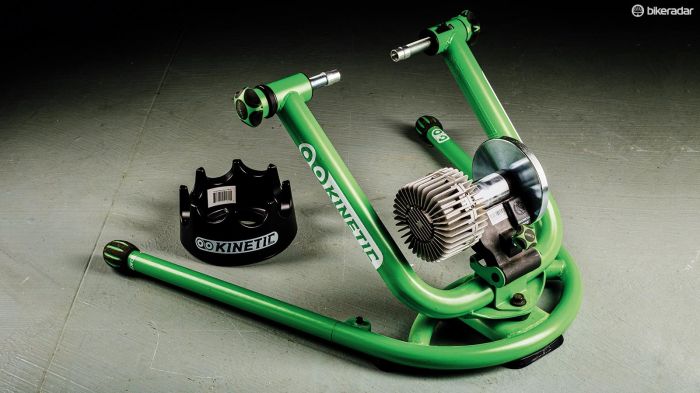
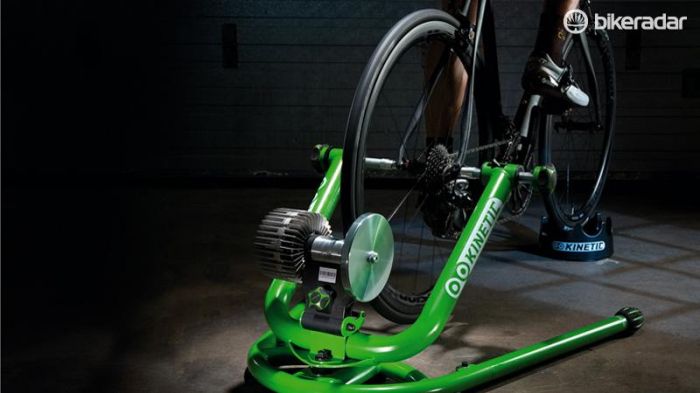
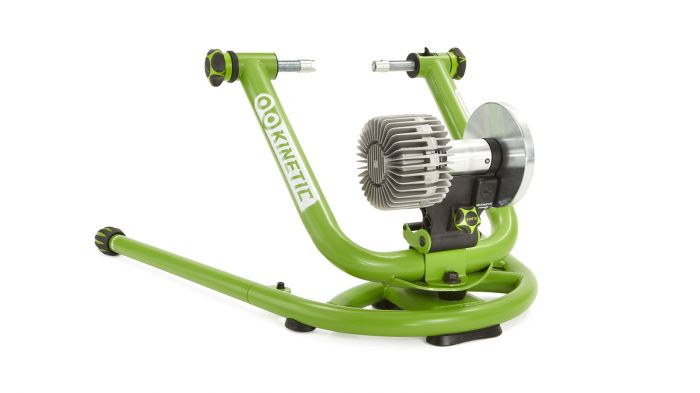
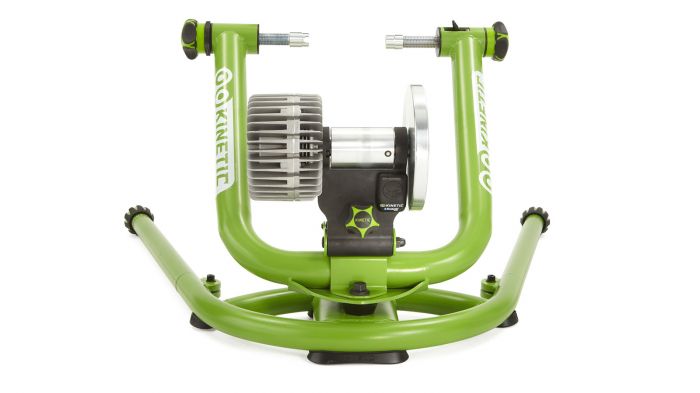
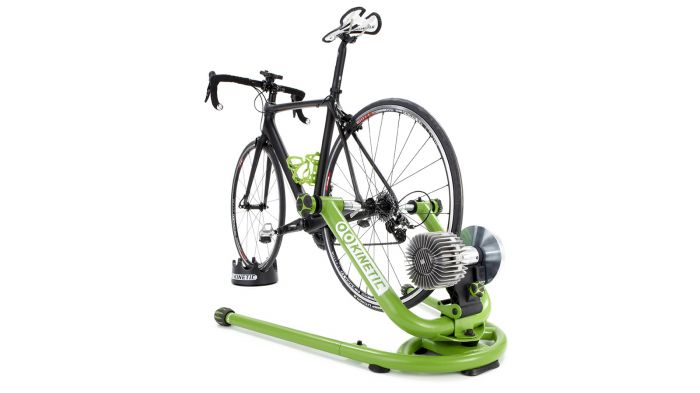
This article originally appeared on BikeRadar
Kinetic's upgrade-dependent, wobble-while-you-work trainer won't suit everyone. But it offers a uniquely 3D-realistic, luxurious feeling ride for those with the extra space and money to appreciate it.
- Highs: Luxuriously smooth and sustained 3d realism with smart upgrade capability
- Lows: Very heavy and bulky, conventional fixed frame road trainer is cheaper and lighter
- Buy if: You want a unique 3d-floated, maximum momentum, smart-communicating ride and have the space for permanent trainer placement
In a world where the 'unique' tag is routinely thrown around to describe anything even marginally different from the norm, the Rock and Roll is truly, properly out there on its own. That's because it mounts the brake and axle clamping arms of Kinetic's conventional Roadtrainer fluid trainer onto a super wide, bolt-together U-frame that sits flat to the ground.
Real-world wobbly riding
Not that different in itself, you might reasonably say, but by putting a big block of rubber between the two halves, the bike and rider are free to flop about sideways like a fat bird on a small twig. So far, not that appealing – but if you add the 'Turntable Riser Ring' (£44.99 / $39 / AU$90), turning the front wheel leans the bike or corrects it back to upright in exactly the same way as if you were riding. The speed of the rear wheel also increases the gyroscopic stability of the bike and trainer, just as it does on your bike.
Add a slight bounce from the rubber block and cantilevered bike mount and it really is surprisingly close to the feel of riding a bike for real, especially if you've got a virtual trainer linkup to enrich the illusion. Kinetic also claims core training benefits from the fact you'll need to move your body to keep the bike inline.
Although we've no specific evidence beyond how we felt after heavy sprint sessions we'd also suggest that it's less biomechanically stressful overall, as the bike isn't rigidly held in place for you to strain against, in the same way that floating shoe cleats are more forgiving on knees than fixed cleats. It adds this whole-body element without the extra skill and focus needed to use a bike on traditional training rollers too, so you can still totally bury yourself into a high intensity workout without worrying about crashing or wobbling.
Better make some room
It takes up more space than any other trainer we've tested though and even with the clever toothed 'quick release' latch you still have to do a lot of turning of the two tone rubber 'turtle' knobs to get your bike secure in the clamps. Very tall ride height means a mounting block of some description will make it easier to flop off after beasting yourself too.
Once mounted the big roller on Kinetic's fluid brake means less tyre deformation and drag, so conventional items will last longer if you don't shell out for Kinetic's specific heavy-duty rubber. There's also less buzz and vibration at full chat than with a smaller roller, although accurate tensioning is vital to stop it slipping as you try and accelerate the massive flywheel.
Once you've got it turning, the feel of the fluid brake is outstandingly smooth, with tailwind-style speed sustain between sprints to boost morale. The resistance curve is shallow though which means it was one of the few trainers we've tested to need pushing past 40kph to hit a 500W peak – and you'll need a large chainring or a really well-spun compact to really give yourself a low-cadence strength beasting.
Wattage measurements are also based on a 'virtual power' algorithm that relates to wheel speed rather than an actual strain gauge or torque measurement. That means it won't spike suddenly under power to give peak readings until the wheel has actually accelerated up to speed. The fluid temperature takes a while to warm up, too, and reach the correct viscosity for accurate readings, but once it is the wattage figures are consistently accurate when cross calibrated with the Stages cranks on our test bike.
The Kinetic Test Flight or Fit controller/data collector apps sync easily to display comprehensive workout information and a range of preloaded training sessions and it hooks up to third-party PC/Mac software well too. As resistance is fixed, it can't automatically change to match any virtual gradients in the software, but obviously your avatar will still 'ride' at an appropriate speed for the wattage.
The InRide Bluetooth pod that you'll need to add to get it to connect to either to see the wattage and other data is another £80 / $75 / AU$140 too, so costs are high for a fully functional system. The rubber block and mount also make the whole setup extremely heavy to lug about as well as giving it a very large footprint in terms of the floorspace it needs. This also makes it far from convenient for pre/post event use in the field.
The conventional base Roadtrainer has the same brake and inRide options for £350 / $369 / AU$700 if you don't fancy wobbling about or emptying your wallet for the same Kinetic feel.
- Wattage deviation: `+ 0-10
- Roll down from 200W: 19 secs
- Noise level at 200W: 80db